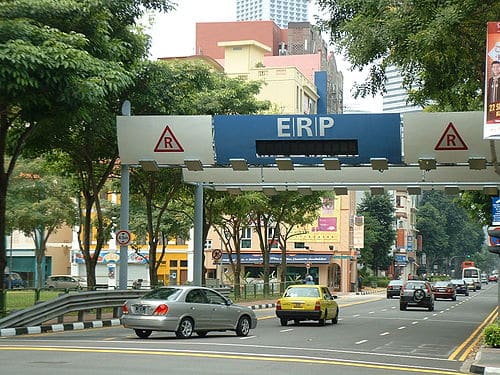
It’s not news; there are too many cars on the road, and auto traffic is a major blight on urban living. So what solutions can we put in place to relieve the pressure? Singapore and London have both gone to congestion pricing; making motorists pay to access busy downtown areas at peak times. Will this work for Los Angeles? A panel of four experts sat down at the Helms Bakery District on Friday May 17, 2019 to consider how it might.
Micheal Mandeville, Associate Professor of Urban Planning at UCLA, Tham Nguyen, Deputy Executive Officer of Transportation Planning at Metro, Asiyahola Sankara, Outreach Program Director at ACT LA, and Kim Christensen, the Land Use Chairperson of West of Westwood Homeowners, all answered questions from Carter Rubin of the Natural Resources Defense Council in front of a room filled with stakeholders.
Congestion pricing is a system of surcharging users of public spaces that are subject to congestion through excess demand such as higher peak charges for use of bus services, metros, railways, and road pricing to reduce congestion. Advocates claim this strategy regulates demand, making it possible to manage congestion without increasing supply.
While charging more to use roads at peak traffic times may be an organizational solutions, its impact on people who are already over-challenged by the price of transportation will be a sticking point. Sankara of ACT LA offered that “I was at another event just yesterday, and a family had been forced into selling their children’s clothes to try and raise cash for rent and gas. Five more dollars isn’t a big deal to someone driving a luxury car, but if you are scraping that hard to afford gasoline, five more dollars might mean you can’t get to work.”
Christensen noted “I’m in the Yes/If camp on this issue. If congestion pricing is the stick, where is the carrot? We need to consider the gender issues of public transportation. Women use public transportation at different times, they have more on-and-off through an average day, and safety is an issue. We need more security, and we need better lighting. If we want more people on buses and trains, we need to make those options feel safe and attractive. ”
Nguyen stated that Metro was already studying the idea of congestion pricing, and had it next to housing as an urgent urban planning concern. She also connected it to Vision 2028, Metro’s 10 year plan to improve mobility in L.A. “All we have to do is look around and see that changes have to be made. What changes we will choose to make, we still need to consider carefully.” The plan is the the funds raised by the congestion pricing will be used to make public transit free. No more TAP cards, just on and off as needed.
The most reiterated concept was from Manville, who pointed out that “We regulate and charge for the things we need to keep a steady public supply of; we have water meters that measure our water use and allow utilities to charge us appropriately, we have electrical meters on our housing that do the same thing. If we charge for using the road, we will have an amount of road that is useable.”
Both Culver City Mayor Meghan Sahli-Wells and Council member Thomas Small were in attendance, noting the pro and con arguments and considering how congestion pricing might apply to our own peak hours and traffic jams.
Judith Martin-Straw
Photo caption – Singapore, the first city in the world to implement an urban cordon area congestion pricing scheme.


Be the first to comment